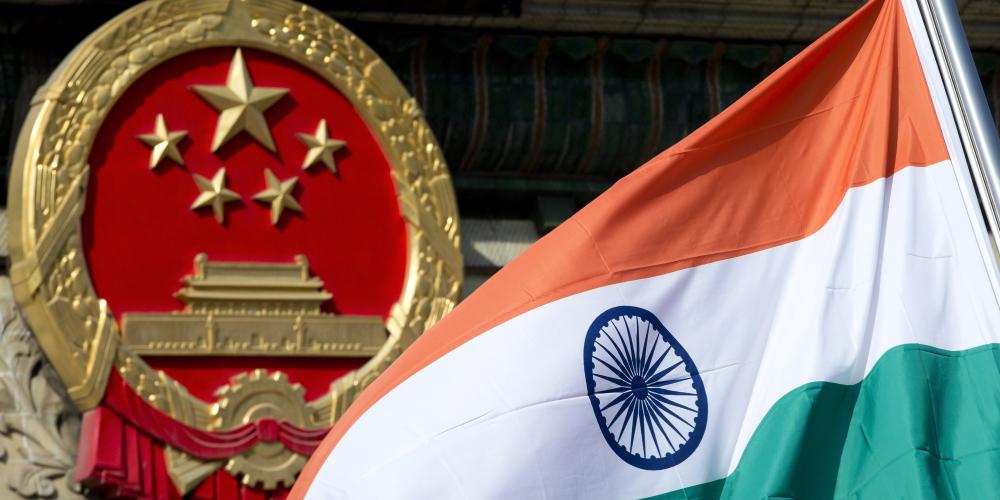As India and China compete with each other for the title of the world’s fastest growing economy, opinions appear to be divided in Iran as to which one would be a better economic partner.
While the head of Iran-India chamber of commerce believes that the national economy could benefit greatly from expanding trade relations with India, deputy head of Iran-China chamber of commerce predicts that Iran’s trade with China could increase by 30-40% following the removal of western sanctions (imposed against Iran over its nuclear energy program).
Business With India
Speaking at the meeting of Iran-India Business Council in Tehran on Tuesday, head of Iran-India chamber of commerce, Ebrahim Jamili, noted that developing business relations with India is easier than with China due to proximities in language, history and culture.
Observing that India’s economic growth is expected to surpass China’s in a few years, Jamili said the high rate of GDP growth, along with India’s population of more than 1.2 billion, projects a positive prospect for bilateral trade relations, IRNA reported.
“As India’s economy grows in size, the Indians’ purchasing power is expected to rise, leading to a more lucrative market for foreign including Iranian products,” said Jamili.
He called on Iranian traders to seize the investment opportunities in India, noting that the American and European countries have for long recognized the potential of India’s market and launched businesses in the country.
The official then criticized Iranian banks for not heeding the parliament’s approvals regarding opening lines of credit (LCs) for the Iranian traders, noting that while the law mandates the banks to open LCs in lieu of 10 percent capital deposited by traders, the banks currently ask for as high as 130 percent as security deposits.
Despite the relatively short distance between Iran and India and availability of maritime, road and aerial routes between the two, Jamili noted that the high cost of transportation still poses a barrier to bilateral trade. He expressed hope that Chabahr Port in southeastern Iran can help remove obstacles and give a new momentum to trade relations.
On a recent trip to Tehran, India’s Minister for Road Transport, Highways and Shipping, Nitin Gadkari inked a memorandum of understanding (MoU) with his Iranian counterpart for the development of Chabahar Port. The port, situated in southeastern Iran, is seen by India as a gateway to both Afghanistan and Central Asia and a possible counter-balance to Gwadar Port in Pakistan, which is now operated entirely by China.
India is the second largest buyer of Iran’s oil after China and was the fourth biggest importer of Iranian non-oil goods in the previous Iranian year (ended March 20). Iran exported $10.3 billion of non-oil goods to India while India’s non-oil exports to Iran stood at $4.31 billion. Basmati rice comprises a significant share of India’s exports to Iran, amounting to $2 billion in 2013-14.
Trade With China in Post-Sanctions Era
Meanwhile, deputy head of Iran-China Chamber of Commerce, Majidreza Hariri, on Monday anticipated that a possible nuclear agreement between Iran and the major world powers, which could lead to normalization of trade relations with the West, would not affect trade relations with China, adding that the volume of Iran-China trade could grow by 30-40 percent.
“Arriving at a final nuclear deal and a possible lifting of sanctions would not affect trade with China, as China is a major supplier of cheap commodities to many countries around the world which are not under economic sanctions,” he was quoted by Tasnim News Agency as saying.
He noted that Chinese products would continue to cater to the needs of many Iranian consumers even after the sanctions are lifted due to their competitive prices compared with the European products, adding that some Chinese produces can even rival western-manufactured goods in terms of quality.
He referred to the “strategic political and economic relations” between Iran and China, noting that China has stood by Iran during the sanctions, purchasing a significant share of Iran’s oil and gas condensates over the past years.
China is reported to have benefited the most from the Iranian market after giant European firms left the Iranian market in the wake of intensifying tensions between Iran and the West over Iran’s nuclear energy program.
China is not only Iran’s largest oil customer; currently it is also the leading importer of Iran’s non-oil goods. According to the Chinese General Administration of Customs, trade between Iran and China amounted to $51.85 billion in 2014, indicating a 72 percent rise from $39.54 billion in 2013. Iran exported $27.49 billion worth of products to China and imported $24.36 billion in 2014.
Iran mainly imports from China goods pertaining to roads, power plants, petrochemicals, machinery, locomotive and wagon. Iran’s top exports to China include gas condensates, petrochemicals, minerals, iron ore and decorative stones. Pistachio, carpet, saffron and date are among other Iranian goods which have good market in China.


